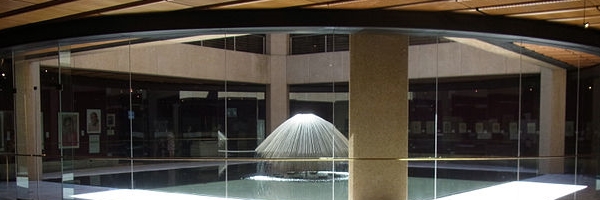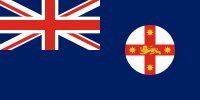






Welcome to coverage of the 2019 New South Wales state election, provided by yours truly at KortJackson.org!
How did we get to here? (A timeline)
In 2015, the incumbent Coalition government (consisting of the New South Wales branches of the Liberal Party of Australia and National Party of Australia) successfully won a second term after a immense landslide win putting them in power in 2011. However, the Coalition suffered considerable seat losses as normally Labor seats in NSW that went to the Coalition in 2011 inevitably made their return to the ALP column. In 2011, the Coalition won 69 seats, the defeated Labor Government only was able to hold on to twenty and the Greens picked up a seat, with the remaining 3 seats going to independents. In 2015, the margin shifted to 54 seats for the Coalition, 34 for the Labor Party, 3 for the Greens and the remaining 2 seats to independents. For both major parties, the 2015 election represented a win of sorts: Mike Baird became an elected premier after being appointed following Barry O'Farrell stepping down, and Luke Foley successfully helped the NSW Labor party demonstrate it cleaned up some of their act that led to their downfall in 2011 and gained much needed strength in the Legislative Assembly.
However, neither Baird nor Foley are leading their parties anymore. Baird opted to retire midway through his mandate, handing the reins to Gladys Berejiklian (pronounced BEAR-A-JICK-LEE-AN), who became NSW's first female premier (and the first premier from the center-right Coalition to lead a state or territory since Kate Carnell was Chief Minister in the Australian Capital Territory). Luke Foley stepped down leading the ALP after several sexual misconduct allegations, making way for Michael Daley to become Opposition Leader.
While Premier Berejiklian has made few mistakes in her tenure as premier, her major headaches actually have nothing to do with her state level party or her own doing. Rather, it's again the federal level Liberals that are causing much of her stress: the federal Liberals had a nasty pair of leadership spills of which the entire rancor and runction led to the deposing of Malcolm Turnbull as Prime Minister and the ascent of Scott Morrison as PM. NSW voters haven't taken too kindly to this, as Turnbull's seat (Wentworth, in NSW) was lost to an independent.
Polling has shown the Coalition and Labor neck-and-neck, with neither party recently getting more than 52% of the vote, and several polls at 50-50. Therefore, it's entirely possible that Berejiklian will be elected in her own right as Premier (and secure a rare third term for the Coalition in NSW) or the ALP will complete their comeback that seemed impossible eight years ago as they were nearly obliterated in 2011. Or... it could be possible the election nets no clear winner, forcing a minority government to be brokered.
So, how does elections and government work in Australia (namely, New South Wales)?
Elections in Australia vary, however, the lower house (The New South Wales Legislative Assembly) is done by compulsory voting in each of the 93 electoral divisions for the Victorian Legislative Assembly (all those eligible to vote must register and vote) via a preferential voting ballot (all votes are tallied, and votes are transferred from eliminated candidates in each round until someone holds the majority of votes, in which they are elected). In addition, Australian electoral bodies (in New South Wales' case, the New South Wales Electoral Commission) will further count the votes until two candidates remain (even if someone obtains a majority and wins the election), determining the final two party or two candidate vote. Whichever party gains a numerical majority of seats (Victoria has 93 divisions for the state legislative assembly, so 47 is the magic number) is considered to have obtained majority government, and the leader of that party tends to become the premier (unless it's the House of Representatives, in which they become the Prime Minister). If a party gains the most seats of all the parties but lacks a numerical majority, they may form a minority government. Unlike in Canada where the largest party may go it alone and win support bill-by-bill, the parliamentary convention is for that party (or a coalition) to gain support from other members of the legislature to form a numerical majority to form government. At the end of the day, a Premier must demonstrate he/she has the ability to accomplish two objectives.
How did we get to here? (A timeline)
In 2015, the incumbent Coalition government (consisting of the New South Wales branches of the Liberal Party of Australia and National Party of Australia) successfully won a second term after a immense landslide win putting them in power in 2011. However, the Coalition suffered considerable seat losses as normally Labor seats in NSW that went to the Coalition in 2011 inevitably made their return to the ALP column. In 2011, the Coalition won 69 seats, the defeated Labor Government only was able to hold on to twenty and the Greens picked up a seat, with the remaining 3 seats going to independents. In 2015, the margin shifted to 54 seats for the Coalition, 34 for the Labor Party, 3 for the Greens and the remaining 2 seats to independents. For both major parties, the 2015 election represented a win of sorts: Mike Baird became an elected premier after being appointed following Barry O'Farrell stepping down, and Luke Foley successfully helped the NSW Labor party demonstrate it cleaned up some of their act that led to their downfall in 2011 and gained much needed strength in the Legislative Assembly.
However, neither Baird nor Foley are leading their parties anymore. Baird opted to retire midway through his mandate, handing the reins to Gladys Berejiklian (pronounced BEAR-A-JICK-LEE-AN), who became NSW's first female premier (and the first premier from the center-right Coalition to lead a state or territory since Kate Carnell was Chief Minister in the Australian Capital Territory). Luke Foley stepped down leading the ALP after several sexual misconduct allegations, making way for Michael Daley to become Opposition Leader.
While Premier Berejiklian has made few mistakes in her tenure as premier, her major headaches actually have nothing to do with her state level party or her own doing. Rather, it's again the federal level Liberals that are causing much of her stress: the federal Liberals had a nasty pair of leadership spills of which the entire rancor and runction led to the deposing of Malcolm Turnbull as Prime Minister and the ascent of Scott Morrison as PM. NSW voters haven't taken too kindly to this, as Turnbull's seat (Wentworth, in NSW) was lost to an independent.
Polling has shown the Coalition and Labor neck-and-neck, with neither party recently getting more than 52% of the vote, and several polls at 50-50. Therefore, it's entirely possible that Berejiklian will be elected in her own right as Premier (and secure a rare third term for the Coalition in NSW) or the ALP will complete their comeback that seemed impossible eight years ago as they were nearly obliterated in 2011. Or... it could be possible the election nets no clear winner, forcing a minority government to be brokered.
So, how does elections and government work in Australia (namely, New South Wales)?
Elections in Australia vary, however, the lower house (The New South Wales Legislative Assembly) is done by compulsory voting in each of the 93 electoral divisions for the Victorian Legislative Assembly (all those eligible to vote must register and vote) via a preferential voting ballot (all votes are tallied, and votes are transferred from eliminated candidates in each round until someone holds the majority of votes, in which they are elected). In addition, Australian electoral bodies (in New South Wales' case, the New South Wales Electoral Commission) will further count the votes until two candidates remain (even if someone obtains a majority and wins the election), determining the final two party or two candidate vote. Whichever party gains a numerical majority of seats (Victoria has 93 divisions for the state legislative assembly, so 47 is the magic number) is considered to have obtained majority government, and the leader of that party tends to become the premier (unless it's the House of Representatives, in which they become the Prime Minister). If a party gains the most seats of all the parties but lacks a numerical majority, they may form a minority government. Unlike in Canada where the largest party may go it alone and win support bill-by-bill, the parliamentary convention is for that party (or a coalition) to gain support from other members of the legislature to form a numerical majority to form government. At the end of the day, a Premier must demonstrate he/she has the ability to accomplish two objectives.
1. The government of the day must demonstrate confidence of the chamber. Once established, confidence is maintained by succeeding in
passing motions of confidence and defeating motions of no confidence.
If a
motion of no confidence is passed, OR a motion of confidence fails, the
government has lost the confidence of the chamber.
2. The government of the day must demonstrate they can secure supply. Supply in the Westminster Parliamentary system is the budget. The government of the day must demonstrate they can pass a budget. If the budget fails to pass, it is akin to a loss of confidence of the chamber.
2. The government of the day must demonstrate they can secure supply. Supply in the Westminster Parliamentary system is the budget. The government of the day must demonstrate they can pass a budget. If the budget fails to pass, it is akin to a loss of confidence of the chamber.
Majority
governments (and minority governments via coalitions (not to be confused with the Coalition, a longstanding agreement of several state and federal conservative parties to govern together), if they hold
together) are generally able to pass both of these tests regularly.True
minority governments, on the other hand, do not tend to last
particularly long. All it takes for a minority government to topple is
for the numerically superior opposition and third parties to combine
together to pass a motion of no confidence (or deny supply). In these
cases, an early election can be called, though the laws and conventions dictate that the numerically
superior opposition attempt to cobble together a majority of votes on their
own and form government instead. A early election
is only called if no other path to an alternative government exists.
Side note: In addition to all 93 seats in the New South Wales Legislative Assembly being contested, 21 of the 42 seats in the Legislative Council is also being contested. The Legislative Council is the upper house of NSW, and legislation must be passed through both houses. However, the Legislative Council does not determine if a government has control, and given the additional complications of predicting the upper house, I will only be predicting the Legislative Assembly result. - KJ
Side note: In addition to all 93 seats in the New South Wales Legislative Assembly being contested, 21 of the 42 seats in the Legislative Council is also being contested. The Legislative Council is the upper house of NSW, and legislation must be passed through both houses. However, the Legislative Council does not determine if a government has control, and given the additional complications of predicting the upper house, I will only be predicting the Legislative Assembly result. - KJ
Image of the Fourtain Court, NSW Parliment is by "Iantomferry" and is under the CC BY 3.0 license, details here.
Image of the New South Wales Flag is a "public domain creation", details here.
